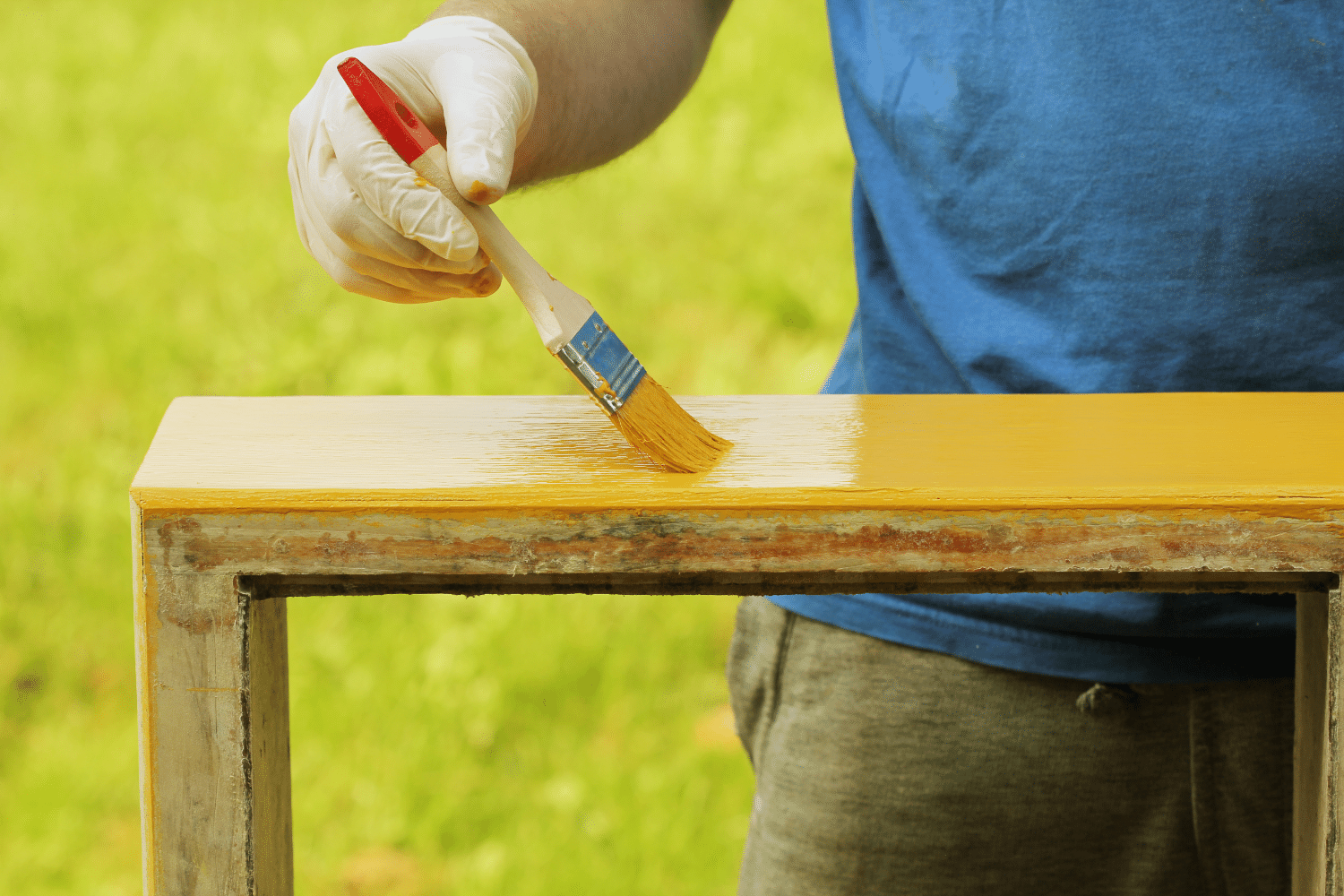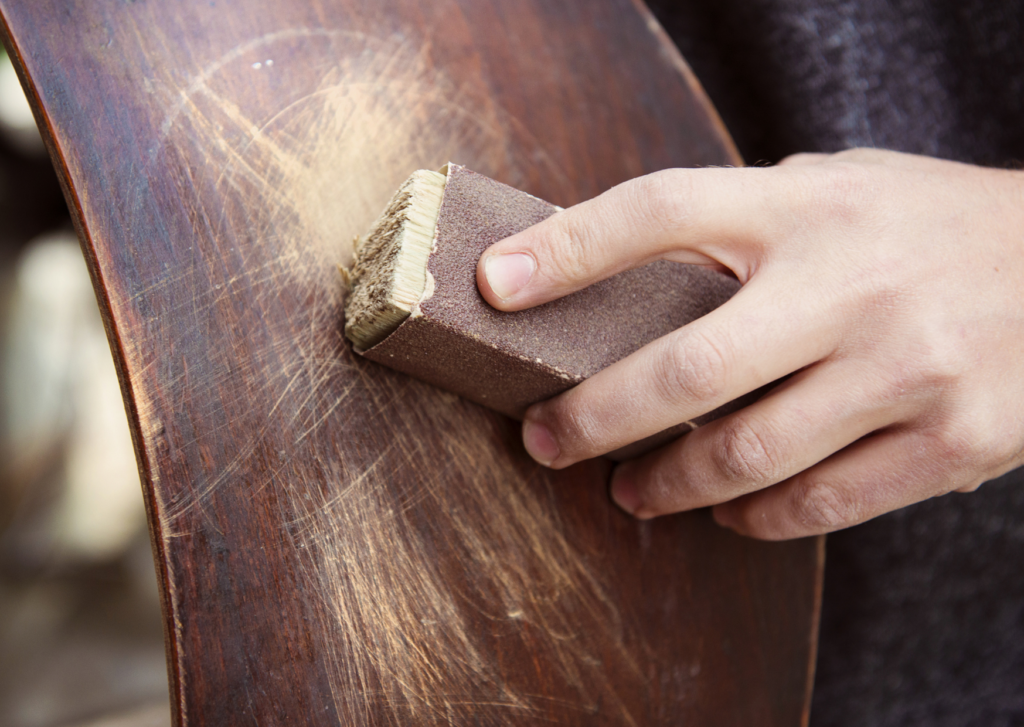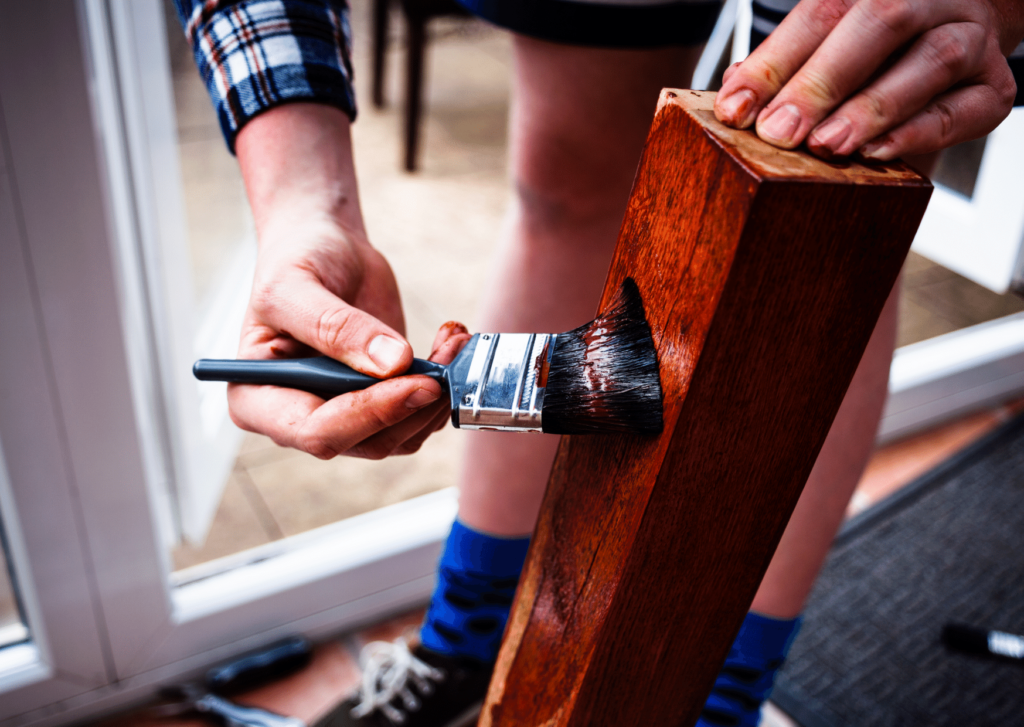
The most important thing to remember when painting outdoor furniture is preparation. You want to make sure that the surface of your furniture is completely clean and dry before you paint it. This will ensure a nice, smooth coat of paint without any streaks or brush marks. Another tip for painting outdoor furniture is to use semigloss instead of gloss so that the finish will be easier to maintain in between coats.
Table of Contents
There are two types: oil based paints which typically last twice as long as water-based but can't withstand harsh weather conditions like rain; and latex paints which are cheaper, more durable with better resistance against water - they also require less sanding prior to application than an oil based paint.
Some budget tips on what to look out for when purchasing new pieces of outdoor furniture. Tips include buying from a reputable store with quality guarantees, inspecting cushions, looking at fabrics that resist fading such as Sunbrella or Olefin fabric.
This isn't exhaustive so feel free to add any other advice below! If you have specific questions about paint and furniture, please contact us.
- If you're looking for a new set of outdoor chairs:
- Consider the style; armchairs are more formal while chaise lounges can be used in a variety of ways
- Look out for height (squat or tall) as well as depth - some people prefer deep seats to take shelter from the sun on hot days
- Invest in quality cushions that will provide comfort and support over time; they should fit snugly into frames without sagging or shifting around when sat upon at different angles

Priming outdoor furniture is required before painting, but make sure you use a fast drying primer that can handle the elements. Apply two to three coats of this primer and allow 24 hours for it to dry completely between applications.
The purpose of the primer is not only so your paint will adhere better, but also because it protects against water from seeping into wood pores. This creates resistance to future staining or rotting, thereby extending its life span outdoors!
- Paint brush bristles should not be too wet or dry, so either dabbing them with a clean cloth to remove excess water is the best method for you, or use an old toothbrush and dip it in paint thinner before using it. A good rule of thumb is that your fingertips should feel slightly damp but no drips coming off when you squeeze your hand tightly.
- You will want to have something beneath what you are painting so as not to get any stray drips on whatever surface below (carpet/concrete). If there isn’t anything available like cardboard then newspapers work just fine! Just make sure they’re extra flat and wrinkle free because wrinkles could create unwanted texture on what you are painting.
- Be sure to avoid overdoing it with the paint and thin coats is key, as well as doing multiple light coats instead of one heavy coat. Again, this will save on your paint supply which we all know can be pricey!
- If you don’t want brush strokes then roll the item in question with a roller instead. This way when it dries there won't be any visible evidence that someone painted at all! Just take care not to go too fast so you don’t end up looking more like Jackson Pollack than Mary Cassatt...unless that's what you're going for? In which case carry on!
There are many types of paint that can be used for outdoor wood furniture. One type is called “outdoor” and another is called “marine grade.” Because marine grade paints have a higher oil content, they last longer but also require more maintenance than the average homeowner would typically want to put in.
Outdoor paint lasts about three years before it needs a new coat while marine grade will last five or six, so if you're looking for something low-maintenance then go with an outdoor option instead! Keep reading for tips on how best to prepare the surface when painting your outdoors items:

* Paint any loose nails first with nail polish remover thinner and let them dry overnight before repainting with primer.
A few good quality brushes are always a must-have for any type of painting project, but when it comes to outdoor furniture there are some specific types that you'll want to have at the ready: an angled brush (for corners and edges), a large flat brush, and medium size round brush.
Now on to what kind of paint! Painting your outdoor wood furnishings is as easy as following these steps - priming first with either water-based or oil-based primer, then applying two coats of exterior grade paint using one or more light colors depending on what look you're going for. It's important not to skimp out when choosing which paints go where because now we're talking about how best to maintain them over time.
If you have specific questions about painting your furniture, please contact us! We hope this article has been helpful and we wish you many years with your living room furniture.
Thank you for reading!!!